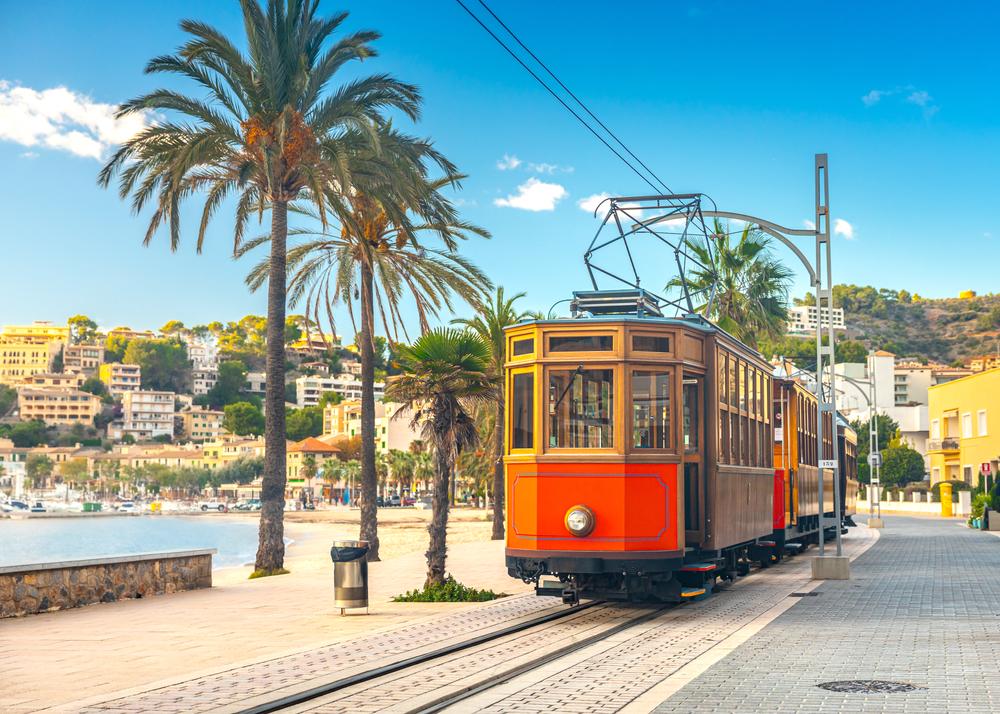A cool, spring rain was falling outside, adding a sheen to the cobblestone passageways deep within the labyrinth of this ancient city, but everything is warm inside a former bakery, in a building dating back to medieval times. Welcoming our small group, Deborah and Nina smiled and offered each of us an apron. Soon, everyone was chopping and rolling and kneading, while sipping a nice, local rosé.

On the menu tonight: two Mallorcan classics, “coca de verduras” (flatbread with greens) and “arros de carxofes i sobrasada” (rice with artichokes and a traditional Mallorcan sausage).
“We cook with simple, humble ingredients, but a lot of flavor,” said Deborah, who owns this small cooking school, called Deborah’s Culinary Island. She explained that their priority is to preserve, and present, the unique cuisine of this Mediterranean island. “This isn’t Madrid, this isn’t Barcelona, it’s not Seville. People come here, they want a taste of Mallorca,” she explained, noting that the meals they make are not gourmet, by design. “You will never see this in a restaurant—it’s peasant food.”

I told her I’m a terrible chef. So she assigned me one of the easiest tasks and took her time, carefully showing me how to make the dough for coca, a traditional flatbread. Just olive oil, a pinch of salt, and flour—the latter made from an ancient grain that almost went extinct, and procured from a local farmer. We mixed it all together, expanding the dough to fit the dimensions of a small rectangular pan.

It’s just one element in what will soon be a feast, the others in the group pulling together other parts of the recipe, all of us snacking on local cheese and sausage laid out in the middle of the table. Like everything here, this meal was many centuries in the making. “We were a center of commerce and trade,” said Deborah. “There are so many layers—the Romans, the Phoenicians the Arabs, they all left their mark.”

Set in the middle of the Mediterranean, Mallorca is the largest of the Balearic Islands, an archipelago with three other major inhabited islands—Minorca, Ibiza, and Formentera. The collective name comes from Greek and Roman origins highlighting the fact that soldiers here were always lightly armored and relied on slinging stones for defense, a very effective strategy in many cases. Home to more than 1.2 million people on Mallorca, Palma is the hub and capital, with a population of about 400,000 people in its metro area.

While many travel here from northern Europe for the simple pleasures of sun and sand, soon after my arrival a brief drive inland from Palma revealed the diversity of this place. The jagged mountains of the Tramuntana Range rose sharply on both sides of the road, their summits covered in a carpet of cloud, giving a mysterious feel to the whole place. (The physical and cultural significance of the mountains are recognized by UNESCO as a World Heritage Site.)


‘Island Within the Island’
Back on the road, we climbed up over a mountain pass and descended into a deep, green valley, dropping into Soller, a town tucked there like a hidden kingdom.“This is like an island within the island,” our guide, Inma, explained. Surrounded by the highest peaks on Mallorca, and home to both a microclimate and a very calm harbor, this town grew oranges, made olive oil, and produced fabrics. Getting their products back to Palma was arduous, although alleviated by a special railway they built, running over narrow gauge for 28 miles.
Still, they preferred to trade by sea with the south of France, and became rich in the process.

“To this day, people still speak with a French accent, and the older folks use a smattering of French words in their Spanish,” Inma explained, as she walked us to the Plaza de la Constitucion, the grand central square in town. Sitting down at a sidewalk café for an afternoon cortado, I watched an old tram toot through the square, on its way to the port. Inma points out the town hall and the bank (“they were so wealthy, they had their own bank!”).


If You Go
Fly: The international airport in Palma is one of the busiest in Spain, handling about 30 million passengers every year. You can fly direct from many European capitals, and a new route on United Airlines will connect Mallorca directly with Newark Liberty International Airport (EWR).





